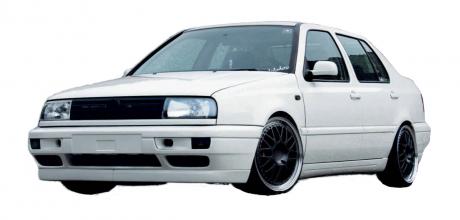3.2-litre 250-bhp engined Volkswagen Vento A3 Mk3 Typ 1H
Building on a bedrock of ideas from his magazine-featured first car, Christian Drechsel opted for a more leftfield silhouette to bring his R32-powered plans to life.
Words: Alex Grant
Photos: Marcus Berger (Vau-Max.de)
SHAPE SHIFTER
German Vento gets the cleaned treatment with an injection of motorsport flavour
it's one of the best we've seen
Things have become a little more SUV-shaped recently but (in Europe at least) Volkswagen is a brand synonymous with hatchbacks – and that rolls over to its performance models too. Whereas you’ll find race-bred saloons at the focal point of the BMW M Division and supercar-baiting wagons in the spotlight at Audi Sport, there’s almost 50 years of hot hatches at the pointy end of Wolfsburg’s bragging rights. It’s given the rare deviations from that theme something of a cult following.
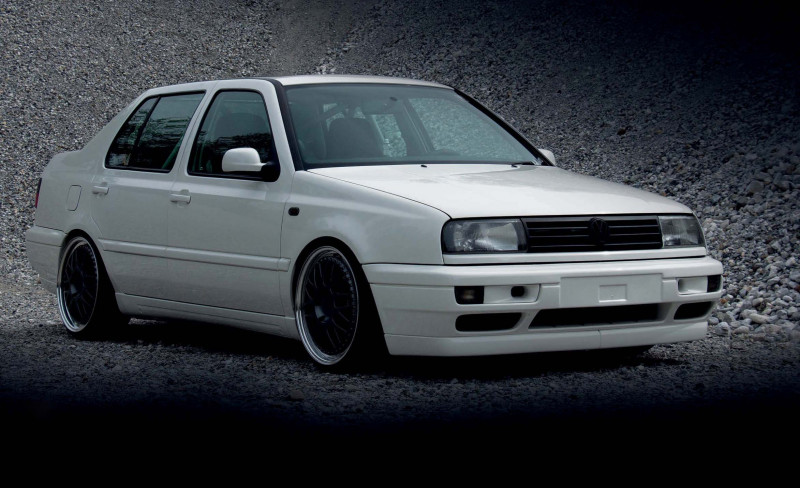
The Vento felt almost Q-car like compared to the limelight-hogging Mk3 Golf that it shared showrooms with. Despite being marketed for its load-carrying practicality, cut-above- the-rest safety features and efficiency-boosting aerodynamics, it had some decent performance pedigree up its proverbial sleeve. Volkswagen equipped its compact sedan with a 174hp VR6 and even took the range flagship racing in its own series, but stopped short of clipping a GTI (or GLI) badge to the grille. Unexpected performance was part of its niche appeal and, with the benefit of a decade-newer powertrain, this one punches a little harder than most.
“I really dig the Vento’s body lines,” explains Christian Drechsel, as we line up a side shot of his R32-powered Vento’s understated three-box silhouette. “There’s something very cool about the look of a simple old Volkswagen sedan with a lot of power, and I have always been a sucker for the VR6 engine — especially the noise it makes. That was the engine of my youth, so there was no way I’d go for anything else.”
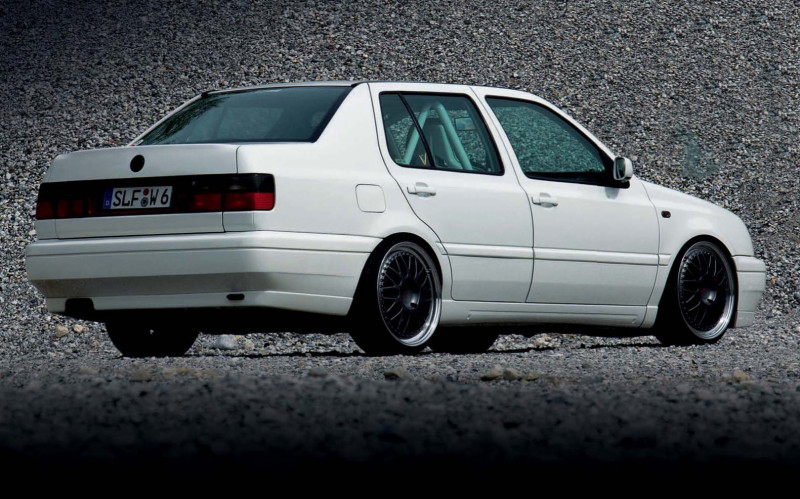
Like a lot of us, this was an affliction baked into the now 39-year-old Deutsche Bahn technician from childhood. Growing up in the former East German region of Thüringia, his earliest Volkswagen memories stem from the Mk2 Golf his family bought after the country was reunified in 1989, and his car-obsessed Dad clearly had an influence too. Something reflected not only by the Mk3 Golf he chose as his first CAR, but the stack of magazines (including this one) he’d been probing for ideas before he got the keys. This was only going to go one way.
“That car got out of hand,” he laughs. “I changed the interior, added air ride, BBS wheels, and shaved bumpers, then it got a magazine feature, so it was well known in Germany. Actually, I think it would still have looked pretty cool today if I hadn’t parted it out to buy the Holy Grail of Mk3s — a three-door, VR6 Syncro Highline, which I ended up selling because I wouldn’t be able to resist modifying that too.”
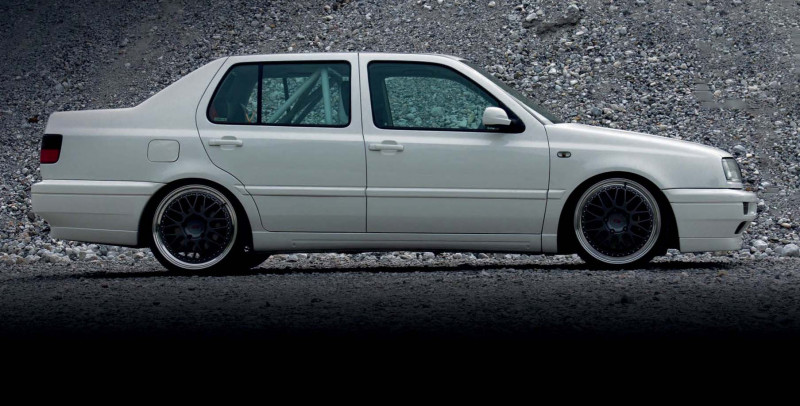
Curious to try something different, Christian swapped howling V6 soundtracks for aircooled flat-fours – namely a patina’d and wheel-tucking T2 single-cab pickup – but never quite satisfied the need to continue where his first car left off. And if that lingering temptation wasn’t nagging enough, the good contacts left as a legacy of past Golf ownership was hardly going to talk him out of it. The trouble is, re-visiting old ground wasn’t quite as straightforward as it seemed, until a different silhouette flashed up on his radar. “Mk3 Highlines were still expensive when I started looking, but the Vento felt like a good alternative,” he remembers. “Even then it wasn’t an easy hunt for the car, because I wanted a good platform to work with – so no rust – and it took a long time to find that. Then I was working in Stuttgart and found this one, which was good to go. I drove home to get temporary plates, then came back to get the car and brought it back with me.”
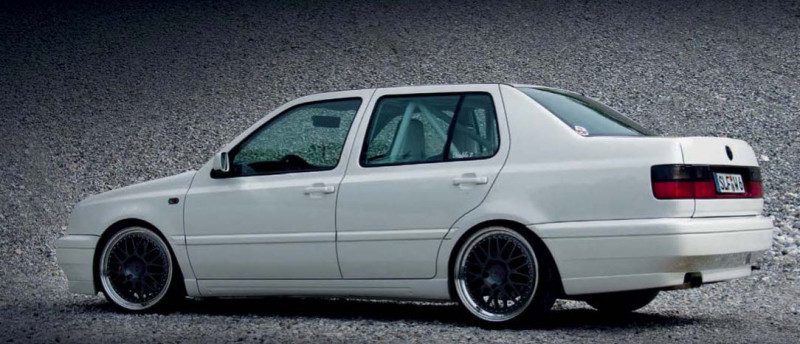
The payoff for that effort was a less labour-intensive revival of the project’s bare bones.
Built just after the Vento’s mid-life update in 1995, the shell had covered just 90,000 kilometres without any mishaps – hardly surprising, considering the glacial progress offered by the original 1.8-litre engine. Previous owners obviously weren’t bothered about getting anywhere quickly.
Christian had other plans, spending the first weeks of the build hoarding parts to dial box-fresh precision back into the chassis, including all-new bearings, bushes and other perishables that would struggle with the incoming power hike. With a base-spec chassis to begin with, that also included breaking a Mk3 GTI to get five-stud hubs and the rear anti-roll bar, all before he began tracking down biggest piece of the puzzle. “The conversion happened in stages, because it took a long time to find a good VR6 as a donor. Then a Bora V6 4Motion showed up in Stuttgart, and it was perfect. It had been a magazine feature car in a past life, but had fallen into a really bad condition, so it gave me all of the parts I needed for the project. That made things a little easier,” he recalls.
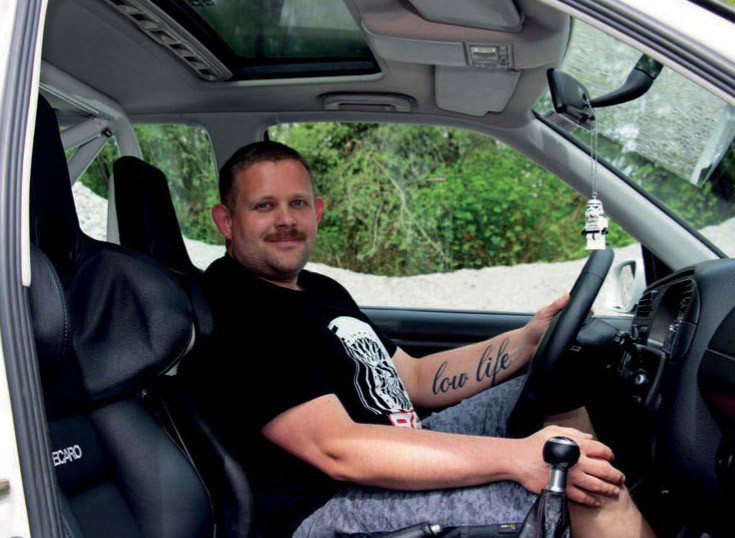
VR6 swaps might seem like an easy route, but the later technology threw a few hurdles into the mix. Switching to the Bora’s drive-by-wire system required a new throttle pedal, and the help of Christian’s friend Stefan to build a custom wiring loom. The upshot was a power hike to 204hp, put down without the weight of four-wheel drive or the heavier Mk4 body, and without the disjointed look of wedging later dials into the dashboard it retained as much of the Vento’s original look and feel as possible… Better performance than any factory version, and without the need to shout about it.
That approach required a similarly careful assessment of the bodywork. Beneath the fresh Candy White paint, the saloon has been cleaned of badge clutter with arches rolled at each corner to dial out any clearance issues. Taking cues from his first car, Christian swapped the ‘happy face’ late-spec grille for an earlier rectangular one, flanked by tinted headlights, then static-dropped the saloon over custom 8.5x17" Porsche Eta Beta Turbo Twists with the help of KW V1 coilovers. An ageless overhaul that turned the laid-back load-hauler into something worthy of rubbing shoulders with Europe’s best at the 2015 Wörthersee Tour.

Of course, even the most carefully laid plans can come unstuck when good luck throws an opportunity your way. In Christian’s case, the performance he’d really wanted showed up in an equally unexpected silhouette — a wrecked UK-import Audi TT with broadly the same 3.2-litre 24-valve VR6 you’ll find in a Mk5 R32. Just two years after it had emerged from its first rebuild, and the Vento was back off the road for another. Well, you would, wouldn’t you?
“I was able to sell the Bora’s old VR6 engine, which meant I could really do the conversion how I wanted,” he explains, lifting the bonnet on its impossibly clean replacement. “Stefan and I rebuilt the engine and painted everything black, then, while the engine was out, we shaved the bay. This was a lot of work – we had to relocate the power steering and battery, delete the air conditioning and build a new wiring loom, and all of this was done in my garage before a friend painted it Candy White.”
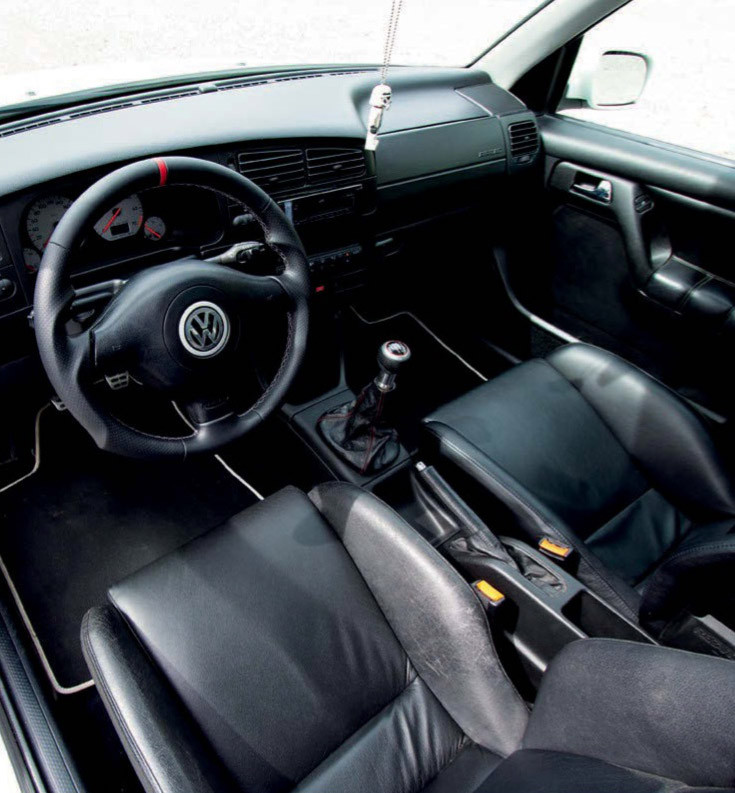
Having gone to that trouble, it hasn’t gone back together in factory tune. There’s a Milltek exhaust manifold, packed in next to the firewall, liberating a little more top-end power without compromising its willingness at low revs, while the custom intake helps de-clutter the inner wings. At a little over 250hp, it has near enough 50% more power than the Vento VR6, and all without stressing any of the engine’s mechanical parts. In turn, the VR6 transmission has only required a clutch upgrade to help channel that performance to the wheels, while the Mk5 gear linkage offers tighter shifts than Volkswagen managed in the 1990s.
Christian smiles: “How does it drive? In just one word; amazing!” he tells us. “The old 2.8- litre engine wasn’t much faster than a factory VR6, but stepping up to the 3.2 nailed it. That exhaust note is incredible and it had a load of power, but you could easily daily it too. The only downside is the intake sound – there’s nothing like the noise of a 12-valve VR6 – but everything else was a step ahead.”
Where bodywork changes are subtle, the engine bay is as much a presentation case for its vocal new six-pot than it is a straightforward home. Every redundant mounting point and bracket has been deleted without trace, and Stefan’s custom wiring loom is routed out of sight through the inner wing, which is also where you’ll find the power steering reservoir. It’s a carefully selected blend of parts, modernised with Audi R8 caps but with colour-coded Volkswagen engine cover instead of the TT’s to keep things looking OE.

Of course, extra power turned out to be the tip of the iceberg. The Mk3 GTI brakes that had been able to keep up with the Bora powertrain quickly began to feel overwhelmed by the increased performance, and Christian knew exactly what he wanted to replace them. No half measures here; the huge four-piston brake calipers are lifted from a Porsche 993 Turbo and wrap around 322mm discs, solving one urgent problem but creating another minor one in the process.
“I had changed a few details since I first built it, so it did a season on BBS RS and then I had a set of gold-centred Le Mans, but always in 17-inch,” he says. “The ‘Big Red’ brake conversion is well known, but I had to go up to 18-inch for clearance. So I went with a set of Cargraphic Racing wheels, which I’d seen on the KPK ‘Green Mamba’ Mk3 R36 Turbo, and built them to go over the brakes.”
They’re the perfect match for a performance machine with a hint of 90s Porsche-inspired understated aggression.
The stubby mirrors are Lupo shells mounted on Mk3.5 Golf Cabriolet bases, while the Kamei air intakes in the old fog light apertures channel air to the front brakes, similar to Porsche’s track-tuned 964 RS. It’s an overhaul heavily influenced by US-based CandyWhiteSniff’s Mk3 Jetta, though we’d argue it’s absorbed plenty of home-turf inspiration too.
Detailing is just as subtle inside. Christian had tracked down a set of Recaro A8s before the build started, and the factory rear bench – complete with fold-down arm rest – is now trimmed in matching black leather. A Mk3.5 Cabriolet donated its steering wheel and dashboard, ditching the rhino-skin effect for early-2000s dimpled plastic and a less cluttered layout, while the red seatbelts are a nod to that era’s performance models. To break up the black, the Weichers Sport half cage is painted body colour, colour-coded to the shells of the Recaro seats, and also matched to tiny Storm Trooper helmets peering off the top of the door pins.
This didn’t have quite the ending he’d anticipated. Having gone beyond the original plans, the Vento had become a TÜV paperwork headache big enough to persuade Christian to sell it on. Not that it’s the end of the road – with a little more time to work through it all, the new owner has jumped through the hoops of German road regulations and is making good use of all that hard work. As for Christian, he’s found some new projects to keep him busy since our shoot.
“Building another big project isn’t really possible any more, but I haven’t shaken off the Mk3 thing completely,” he tells us. “I have a really nice Mk3 Cabrio which is my daily drive through the summer, and a Porsche 944 Turbo on BBS RS and bagged Mercedes W126 as Sunday cars. The Vento turned out well, and I loved the people I met and the places it took me, but it was time to move on.”
Bittersweet perhaps, but it’s a rare deviation from the hot hatch norms that’s gone beyond a cult following. A perfect meshing of influences that ought to give this particular Vento a shot at the limelight, without detracting from its Q-car appeal. And, as Volkswagen’s performance car lineup becomes more SUV shaped (and more electric too) Christian’s vision of a quietly modernised Q-car has all the makings of its own cult appeal.
“I have a nice Mk3 Cabrio which is my daily drive and a Porsche 944 Turbo on BBS RS"
DUB DETAILS3.2-litre 250-bhp engined Volkswagen Vento A3 Mk3 Typ 1H
- ENGINE: 3189cc, 24-valve VR6 (BHE) from Audi TT, Milltek exhaust manifold, custom intake, custom tucked wiring loom, VR6 five-speed gearbox, Sachs performance clutch, Polo shifter and Mk5 linkage, smoothed engine bay with relocated power steering apr, battery and deleted AC, colour coded engine cover, Audi R8 oil and coolant cap, chrome bonnet
- CHASSIS: 8x18" ET59 Cargraphic Racing wheels with satin grey centres, 195/35 Achilles ATRK tyres. KW V1 coilovers, Porsche 993 ‘big red’ brake kit with four-piston calipers and 322mm drilled discs, Porsche 5x130 PCD stud Conversion
- EXTERIOR: Full respray in original Candy White, rolled arches, Mk3.5 Golf Cabriolet mirrors with Lupo parts, smoked headlights, early-spec Vento grille with black badge, Kamei fog light air intakes, smoked side repeaters, debadged boot lid with black VW logo
- INTERIOR: Recaro A8 black leather front seats with colour coded backs, Vento rear bench trimmed to match, Mk4 Cabrio dashboard, colour coded Weichers Sport half cage, custom red seatbelts, Mk4 Golf steering wheel, VR6 instruments with white dials, Storm Trooper lock pins, Golf 3 GTI gear knob, custom mats with white piping
- ICE: JVC Bluetooth head unit
- SHOUT: Stefan, Ebi, Manni and all the German Dubworks guys and girls!
«At over 250bhp, it has 50% more power than the Vento VR6»


